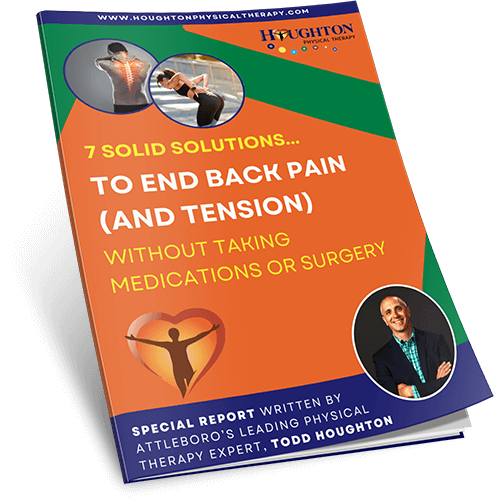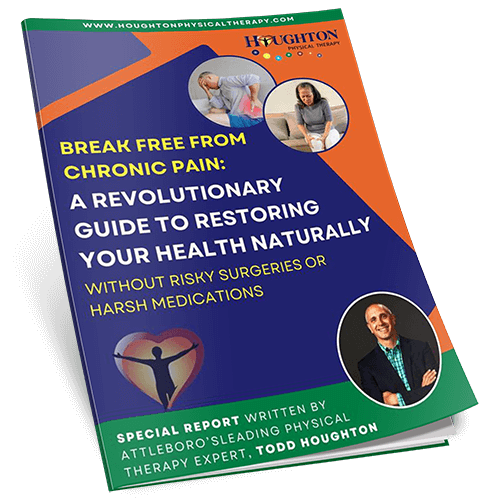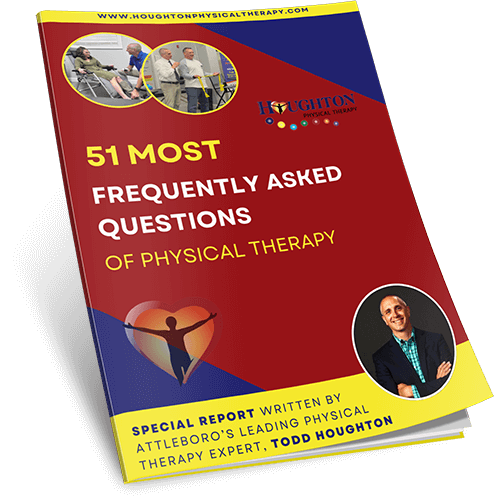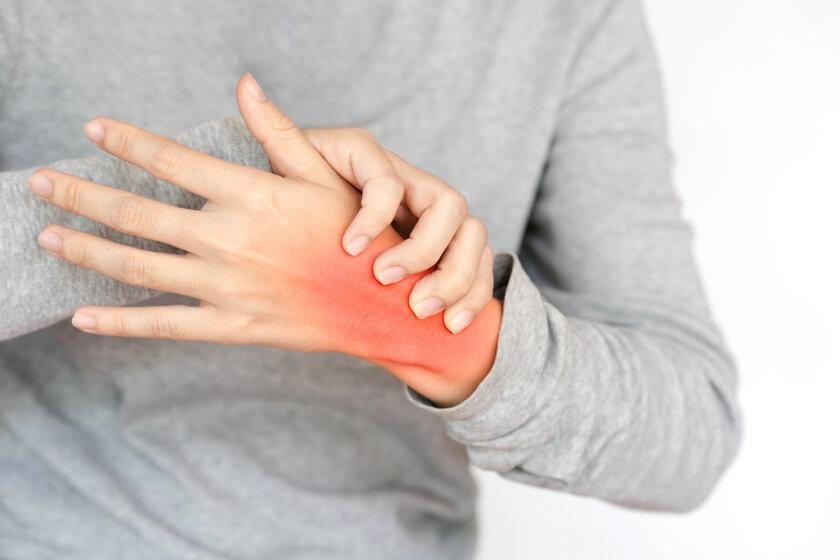Sciatica & Back Pain Relief
Relieve the Pains in Your Back with Physical Therapy
According to the American Physical Therapy Association, back pain is the most commonly reported pain across the nation. One out of every four Americans has experienced back pain in the past three months.
Back pain and sciatica differ but are often confused with each other. The back is specific to the upper, mid, or low back. Sciatica is a more diffuse, radiating pain down the buttock, thigh, and even leg. It is also possible to have radiculopathy, which is a radiating numbness, tingling, burning, or sharp pain in a specific part of the leg. This is often associated with a herniated disc or entrapment of the nerve of that area as it exits the spine.
Do you wake up in the morning with that nagging back pain? Are you feeling achy pain in your back, buttock, or even thigh? Do you have to watch what you do because you are afraid you may hurt your back? If so, physical therapy can help.
If you are searching for back pain relief or sciatica relief, don’t rely on medicines to mask the symptoms. Your body is telling you of the deeper root cause of the problem that needs to be fixed. Know that physical therapy should be your first treatment, eliminating your need for harmful painkilling drugs, such as opioids, or possibly avoiding an invasive surgical procedure.
How will physical therapy help with my back pain or sciatica?
For most people, back pain will come and go. However, many people don’t realize that the underlying problem of poor joint movement, core weakness, and poor muscle coordination will set them up for a future back injury, which can be significantly worse.
Back pain and sciatica are both completely treatable through physical therapy. Your physical therapist creates a specific treatment plan for you that depends on your diagnosis. The early stages of your physical therapy treatment focus on quick pain relief.
As your pain reduces, your physical therapist will expand on strengthening your core muscle group with specific therapeutic exercises and stretches. The goal here is to increase your strength and range of motion to prevent re-injury to your spine. Finally, we teach you ergonomics and ways to ensure you know how to take care of your spine and avoid future problems.
If you are suffering from sciatica, our physical therapists will implement specific leg stretches into your treatment plan to loosen the sciatic nerve. This restores the natural health of the nerve and quickly reduces symptoms.
How can I tell if it’s back pain or sciatica?
Sciatica
Sciatica is a specific type of back pain that is reported as being highly uncomfortable. However, it is also fortunately very simple to diagnose. People with sciatica experience pain along their sciatic nerve, which is the largest nerve in your body.
The sciatic nerve begins at your lower back and then splits at the base of your spine to extend further down to your buttocks, legs, and finally to the bottom of each foot. The sciatic nerve can become compressed or irritated, which causes a “shooting,” “stinging,” or “burning” sensation in your lower back, buttocks, legs, or feet.
Back pain
“Back pain” is a term that an array of different conditions can cause. For example, you may experience back pain due to poor posture, a motor vehicle accident, or a lifting injury. The treatment plan that your physical therapist sets up for you will depend on how you developed the back pain, its exact location, and your medical history.
Back pain can be described as acute, meaning it is short-term, or chronic, meaning it is long-term (typically lasting for three months or longer).
What caused my back pain or sciatica?
General back pain typically develops as the result of an injury compounded by core weakness. This can be because of repetitive straining motions, such as leaning down multiple times throughout the day to pick up a toddler, or a more serious, sudden trauma, such as a motor vehicle accident. Underlying conditions, such as herniated discs or SI joint dysfunction, can also cause immense pain and cause radiculopathy pain to the thigh, leg, or foot. Degenerative disc disease is a common condition that can cause back pain as we age. Those with this condition typically report dull, aching pains in their lower back and have difficulty with prolonged standing or walking.
Sciatica’s technical name is “lumbar radiculopathy.” People who develop this condition are generally between the ages of 30 and 50. Many types of injuries can cause the development of sciatica, including arthritis, bone spurs, or any other injury that impacts the sciatic nerve. Most commonly, we find people lose their flexibility in the hips and pelvis and strength in core muscles, including weakness in gluteus muscles. This alters the mechanics of the spine and compression to the sciatic nerve as it travels through these tissues.
How to fix sciatica.
To fix sciatica, specific exercises are required, and if you stick with them, the pain will be more bearable, and you can get back to doing the things you love.
Another way to fix sciatica is to reduce the amount of time you spend sitting, as this will relieve pressure on the lower back and your sciatic nerve.
We’ve had some patients with sciatica pain say that sitting doesn’t hurt their back. However, they will have a slouched posture or sit in a modified position to avoid the pain.
To read more about sciatica pain, take a look at our blog post.
Click Here to Read Our Blog Post “What Are The Signs Of Sciatica Improving?”
Contact us for relief.
If you are experiencing back pain or sciatica, make an appointment with one of our specialists at Houghton Physical Therapy. No matter how severe the pain may be, we will help you get on the road to recovery as quickly as possible.
If you want to find out more about how our friendly and experienced physical therapists can help you, there are a few options:
To get more expert information right now, you can download our free report by clicking the link below:
Click Here To Download The Free Report: How To Put An End To Back Pain And Stiffness Without Taking Pain Medications Or Surgery.
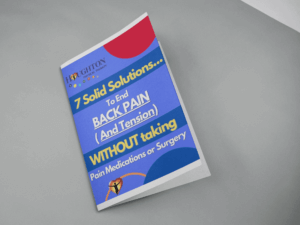
Or, if you want to speak to one of our brilliant physical therapists, you can complete our online inquiry form and book a free discovery visit where you can discuss your specific problems, answer questions you have, and identify the best route to fix your sciatica and lower back pain.
Most importantly, we will listen to everything you have to say and tailor our advice to you – we won’t give you the “rest and medication” advice that you might have received in the past.
It only takes a minute to complete, so click the link below to book a free discovery visit, and one of our team members will contact you as soon as possible to arrange it.
Click Here To Book A Free Discovery Visit With One Of Our Expert Physical Therapists.


